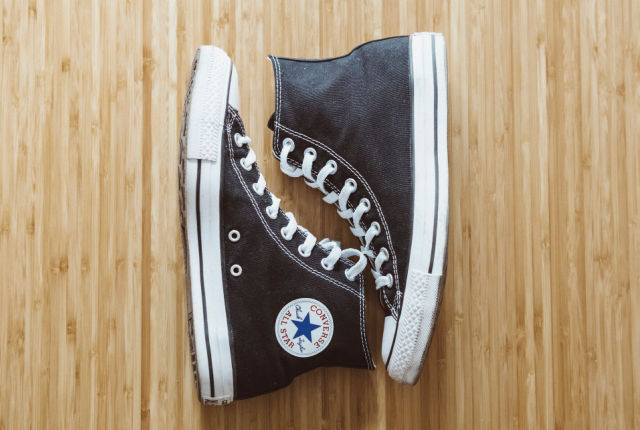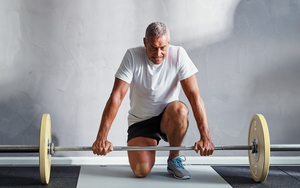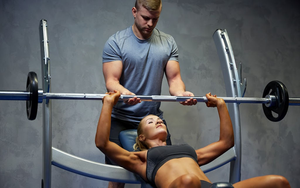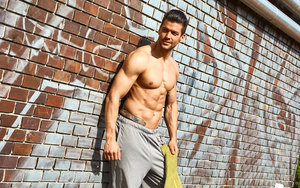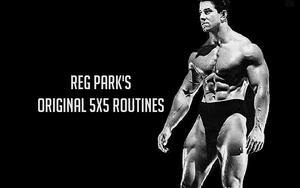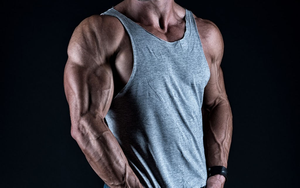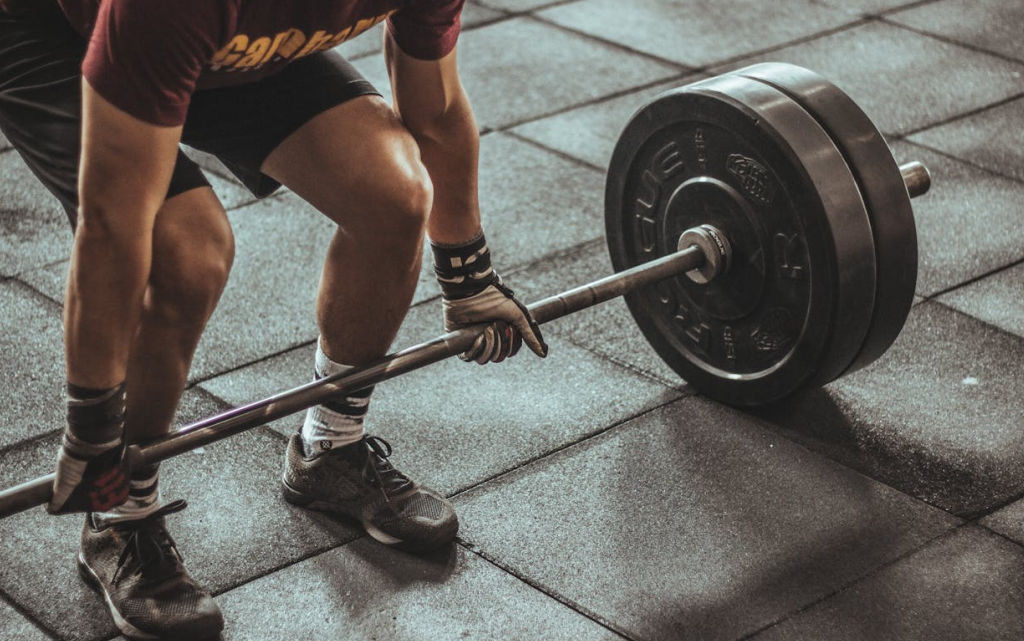
How to Deadlift Properly: A Beginner's Guide
By far, the movement that involves more muscles in the body than any other lift is the conventional deadlift.
Many years ago, a researcher named Per A. Tesch wrote a book called "Muscle Meets Magnet" which published data from various exercises performed under MRI. He found the conventional deadlift uses some 21 muscles in the body.
Squats were second, using some 17 muscles. The deadlift is a very demanding lift as it uses almost all of the major muscles in the body.
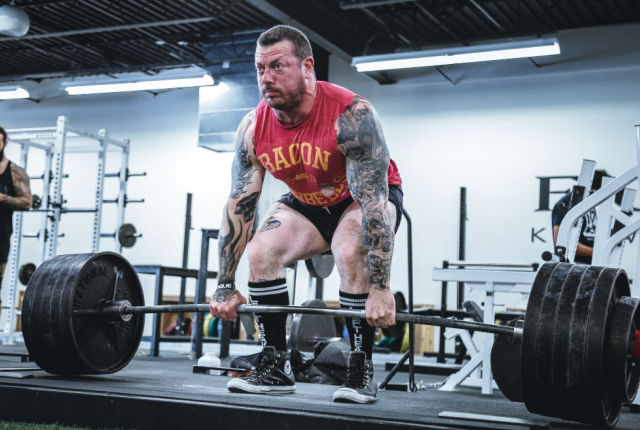
Generally, as there is also a high level of injury when not performed properly, it is best practice to use low reps, between 3-8.
The conventional stance deadlift is an excellent precursor to other lifts such as Olympic lifts and also learning how to pick up heavy weights in a clean and safe manner. It is not necessary for trainers to use extremely heavy weights in the deadlift either, as the goal is to build core strength over and above that which squats alone and other assistance low back movements like the hyperextension.
Deadlift: Wide or Narrow Grip - "Sumo" or "Conventional"?
The conventional deadlift has a greater range of knee extension and involves the spinal erectors to a greater degree than the sumo style deadlift. The narrow stance lift is usually a simpler movement to learn than the sumo style an calls for power in the quads, flexible ankles and a strong back and abdominal wall.
Athletes that require straight line power development such as rowers, track and field, running, skiing, speed skating, sprinting - would probably be better off with the conventional deadlift, while ones who require lateral movement, like football, hockey, volleyball, soccer and so on, would be better of with the sumo style.
It has also been noted that people with longer arms are better suited for conventional and those with shorter frames and arms are better of with sumo, however this is not carved in stone as everyone's unique biomechanics are so vastly different.
One really has to learn both lifts correctly and experiment for themselves. It is likely that you will find yourself stronger in the sumo deadlift in any event.
Conventional Deadlift
Approach the bar with a stance of about shoulder width and make sure the laces of the shoes are under the bar with the toes pointed outwards slightly. As in the squat, the bar should line itself right over the arch of the foot.
The lifter should bend down with the feet flat and grasp the bar just outside the legs. To keep the bar from rolling out of the hands, the palms should be facing in opposite directions with the dominant hand usually facing forwards.
The arms should be as perpendicular to the bar as possible with no bend in the arms at all. The shoulders which should be in front of the bar. While keeping the bar as close to the shins as possible, bend at the ankles and knees.
The knees should be positioned slightly ahead of the bar with the heels flat and the weight shifted a bit towards the balls of the feet. The head should point slightly upwards.
Before commencing the lift, take a deep breath and expand the chest as you would when setting up the squat. At this point you should feel the arms straighten and the back being pulled tight as the hips move back and up.
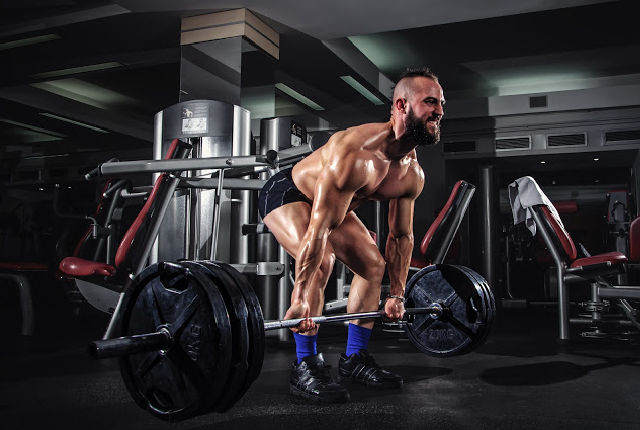
Now, you should lock the lower back and push down forcefully with the full of both feet using the muscles of the hips and legs.
Throughout the strong hip and leg drive, keep a flat back (neutral lordosis). To help keep this position the head should be held up (not dropping and looking at the floor) and the chest should be ahead of the shoulders, which should be in front of the bar.
Squeezing the glutes tight helps maintain back strength and leg drive.
Once the bar reaches the knees, the lifter should keep applying force with the legs and hips. Once the bar passes the knees it should slightly slide along the thighs.
As the knees and hips extend, the upper back comes into play to achieve the final form position. There should be no hyperextension at the top. ( I know we see it often, but it is wrong!)
Key Points of Proper Form on the Deadlift
- Back is flat with neutral lordosis to minimize stress on the posterior chain's ligaments and shearing forces on the vertebrae.
- Head is aligned with the torso in neutral lordosis.
- Shoulders over the bar with the bar positioned directly beneath the shoulder blades to ensure transition of power throughout the movement from the hips to the bar.
- Your arms should form a slight angle less than 90 degrees to the floor, ideally at 10-15 degrees from shoulder to the bar.
- Shins touching the bar with the bar itself over the shoelaces to maintain the center of gravity.
Sumo Deadlift
In the wide stance sumo deadlift, the inner thighs and hips are used much more than in the conventional deadlift.
This technique is well suited to lifters of all physique type and because it shortens the lever arm, it is especially beneficial to those who are long in the torso. In order to do this lift one must have good flexibility in the adductors and strength in the hips.
The harder part about this lift is that the initial drive off of the floor is much harder and usually less explosive.
The shins should touch the bar and the feet angled outwards. Try to place the feet out as far as possible, given that the lower leg is vertical to the floor when in a bent position.
Grasp the bar with both hands, taking an alternate-palmed grip. The hand spacing is narrower than the conventional deadlift - depending on your shoulder width, with arms in the perpendicular the grip may be partly off the knurling.
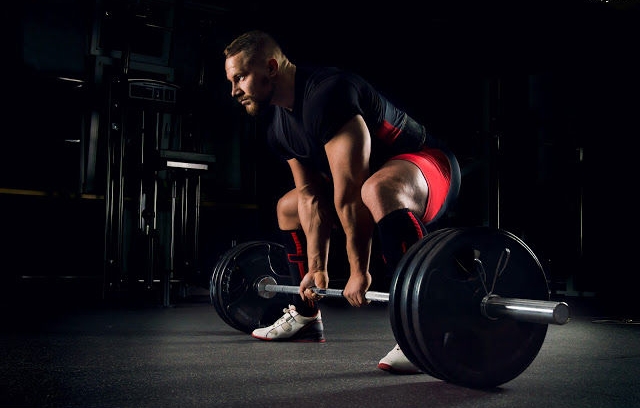
When starting to move the weight, push downwards with the hips and legs with increasing force while pulling up. While applying force, hold the body as tight as possible as the bar comes off the floor.
Concentrate on keeping the chests expanded and in front of the shoulders. This position will keep the bar close to the legs and facilitate a superior mechanical advantage as the bar comes upwards.
As with the conventional deadlift the hips and shoulders should rise simultaneously with the angle of the back the same from start to finish.
Summary
- Shins touching the bar when commencing the lift. But before starting the lift, keep the shins a few inches away from the bar, when grabbing the bar, the legs will be straight, then drive the shins forward into the bar, which will bend the knees and drop the hips. By making sure that your shins touch the bar before you start the lift, you ensure that the bar will travel as close to the body as possible, reducing lumbar shear and also will help lower the center of your body.
- Feet shoulder width apart. Keep the toes pointed slightly outwards.
- Chest out, big breath in. By doing this and keeping your shoulders back, upper body and hips and glutes tight, you will ensure that your back does not round.
- Head position. Do not look either excessively up or down. Look straight forward.
- Keep your arms straight. Starting the lift with bent arms is a good way to injure a biceps tendon. Keep your triceps tensed.
- Avoid trying to pull the weight off of the floor. Do not think in terms of "pulling" the weight off of the floor, but rather starting the weight moving by pushing the floor away through your heels. If you were to try to initiate the movement by pulling the weight off of the floor, it is likely that your back will round to compensate for the lack of hip drive. I can bet on that. Remember: the hips move first, and then the knees. Your hips are what move the weight!
- Tense your glutes! As with other full body movements: bench press, overhead press, squat, etc., it is vital that you tense your glutes to involve the hips. In the case of the deadlift, think of the top half of the movement as being all about driving the hips forward, into the bar (again, rather than trying to pull the bar/body straight!) The glutes, hips, grip and back move the weight.
- Lockout with a neutral spine. Do not hyperextend the back at the top of the movement. When I saw the lifter do this, I can be sure that they are not keeping their glutes tight throughout the lift, because if they were, the glutes would have locked them into a 90 degree position on lockout.
Footwear
Any sort of shoes with a flat sole will give you an unstable base to lift from. The best, and cheapest solution is to get a pair of Chuck Taylor's (pictured). If you need arch support, get a solid plastic insert inside them.
